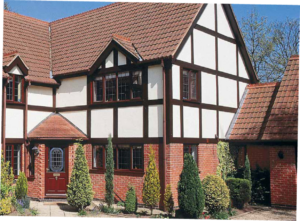20 Reasons To Believe Double Glazing Design Will Never Be Forgotten

Understanding Double Glazing Design: A Comprehensive Guide
Introduction
Double glazing has actually reinvented the method homes and structures are created and built. With an emphasis on energy efficiency, sound insulation, and aesthetic appeal, Double Glazing Quotes glazing plays an important function in modern architectural practices. This short article explores the concepts of double glazing design, its benefits, setup methods, and often asked concerns to offer a well-rounded understanding for anyone aiming to invest in this important home improvement.
What is Double Glazing?
Double glazing describes the building and construction of window systems that consist of 2 panes of glass sealed together with a space, normally filled with a gas such as argon, which substantially decreases heat transfer. This design offers various benefits over single-glazed windows, including improved energy performance, improved thermal efficiency, and better sound insulation.
Secret Components of Double Glazing Design
-
The Glazing Units: Comprised of two glass panes, which can be made from various types of glass, consisting of low-E (low emissivity) glass, which reflects heat back into the room during cooler months.
-
Spacer Bars: These are the products that separate the 2 panes of glass and hold them in location, guaranteeing that the space between the panes stays consistent. The spacer bars are crucial for preserving the thermal residential or commercial properties of the glazing unit.
-
Sealants: High-quality sealants are used to supply a weather-tight seal around the edges of the glazing units. This prevents moisture and air seepage, which can compromise efficiency.
-
Gas Filling: A gap filled with an inert gas, like argon or krypton, increases thermal insulation compared to regular air.
Advantages of Double Glazing
The design of double glazing deals a number of significant advantages, making it an attractive choice for property owners and designers alike.
| Advantages | Description |
|---|---|
| Energy Efficiency | Reduces heat loss, thus decreasing energy costs. |
| Sound Insulation | Minimizes external sound intrusion, improving convenience. |
| Increased Security | Double-pane glass is harder to break, supplying added security against intrusions. |
| UV Protection | Blocks hazardous UV rays that can fade furnishings and flooring. |
| Condensation Control | Reduces the risk of condensation forming between panes. |
The Design Process of Double Glazed Windows
Designing double-glazed windows involves several phases, making sure that they fulfill aesthetic, practical, and regulatory requirements.
1. Evaluation of Needs
Before the style procedure begins, an evaluation of the requirements is essential:
- Energy Performance Goals: Understanding the awaited energy effectiveness requirements.
- Visual Preferences: Determining the total appearance that matches the architectural style of the structure.
- Ecological Considerations: Considering the regional environment and environmental aspects.
2. Glass Selection
Picking the ideal type of glass is essential. Aspects influencing this choice consist of:
- Thermal Performance: Low-E glass for energy effectiveness.
- Safety: Tempered or laminated glass for enhanced security.
- Sound Reduction Capabilities: Using customized acoustic glass if noise reduction is a concern.
3. Frame Material
The frame can substantially influence both the aesthetic appeal and practical performance of double-glazed windows. Typical materials consist of:
- uPVC: A low-maintenance, cost-efficient option.
- Aluminium: Stronger and offers a contemporary aesthetic however has a greater thermal conductivity unless thermally broken.
- Wood: Provides visual warmth and insulation however requires more upkeep.
4. Installation Process
Proper installation is crucial to ensure optimum efficiency. The typical process includes:
- Removal of Existing Windows: Careful dismantling to avoid damage to the walls.
- Preparation of the Frame: Ensuring the opening is square and prepared for the brand-new unit.
- Fitting the Double Glazed Unit: Positioning and securing it in location.
- Sealing: Using sealants to avoid wetness ingress and improve insulation.
5. Quality Inspection
Post-installation, a quality examination confirms the efficiency of the double-glazed windows, guaranteeing they meet requirements and specifications.
Maintenance of Double Glazed Windows
The fundamental nature of double glazing makes it relatively low-maintenance; nevertheless, periodic care is required to extend its life-span:
- Cleaning: Regular cleansing of the glass panes guarantees optimum natural light entry.
- Inspect Seals: Inspect seals regularly for indications of wear or damage.
- Condensation Checks: Any indications of condensation in between the panes warrant professional assessment.
Often Asked Questions
1. How do I know if I need double glazing?
If you experience drafts, high energy expenses, or external noise disruptions, upgrading to double glazing could be a beneficial investment.
2. Is double glazing worth the investment?
Yes, while the preliminary costs can be higher than single glazing, the long-term cost savings on energy expenses and increased home value often offset this expenditure.
3. Can I install double glazing myself?
While DIY installation is possible, professional setup is suggested to make sure the stability and performance of the windows.
4. The length of time do double-glazed windows last?
Generally, double-glazed windows can last in between 20 to 35 years, depending upon the quality of installation and products used.

5. Exist different types of double glazing?
Yes, there are several types, including standard double glazing, sound decrease double glazing, and low-E glazing, each developed for particular requirements.
Double glazing design offers innovative options that improve the performance of windows while enhancing energy performance and aesthetic appeal. Property owners seeking to increase their comfort levels while reducing energy consumption will discover double glazing an appealing financial investment. By comprehending its style, elements, and benefits, individuals can make educated choices that contribute to more sustainable and comfortable living areas.


